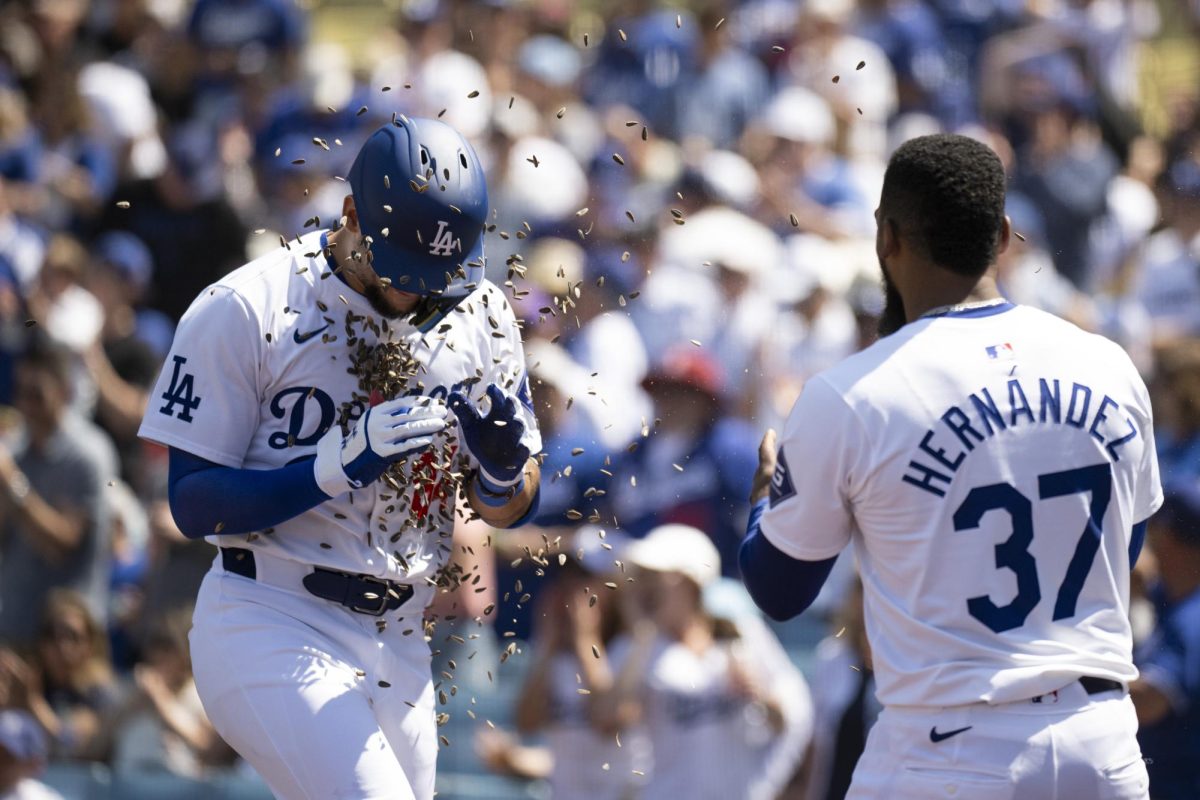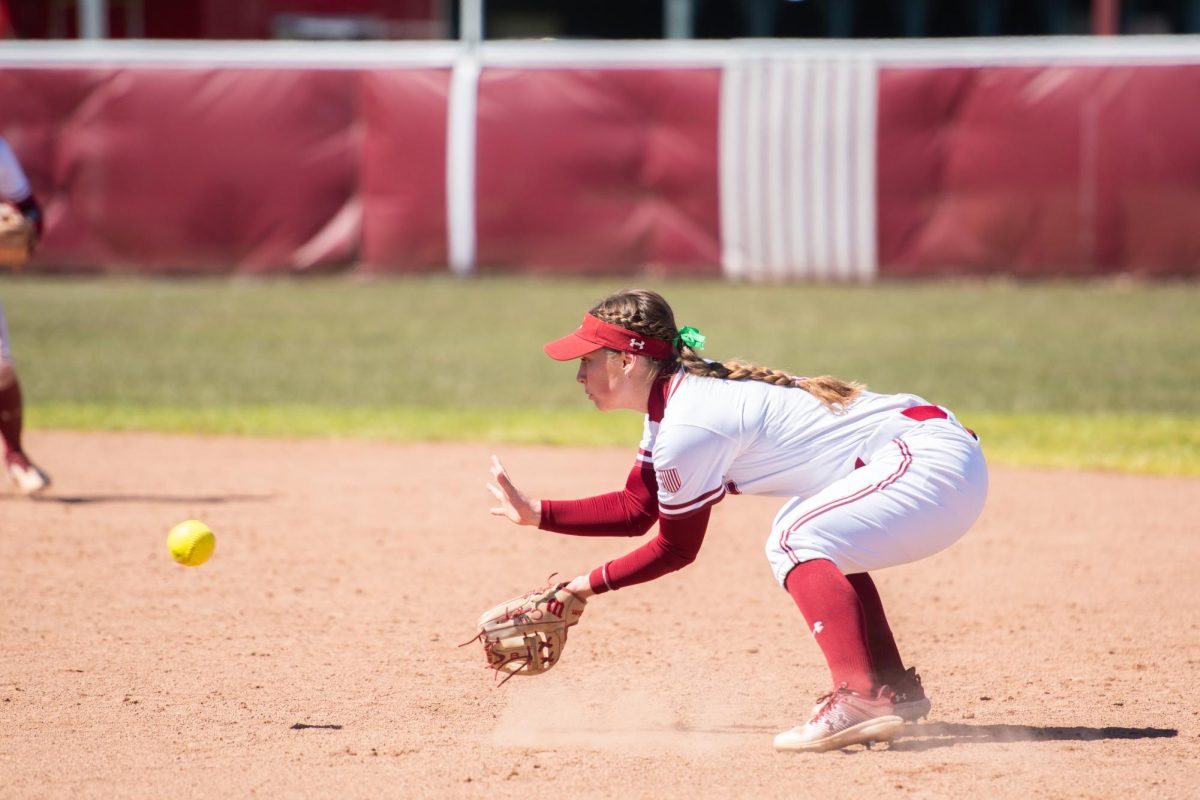“Hello friends, and welcome to a tradition unlike any other.”
These are the famous words of Jim Nantz that start the best weekend of golf every second weekend in April. This year, from April 11 to April 14, 89 players competed in Magnolia Lane at Augusta National Golf Club in Georgia for this year’s green jacket, and unsurprisingly to all, the 2022 Masters champion and current No. 1 player in the world, Scottie Scheffler, took home his second Masters title.
The Opening Round started with a delay due to rain and high winds, but once the weather cleared, the opening group was able to tee off at 10:30 a.m. on April 11. Multiple players, including Bryson DeChambeau and Ryan Fox, got off to a quick start with three consecutive birdies beginning the round. While Fox finished his last 15 holes at one over par, DeChambeau made light work of the back nine, with five birdies in his final seven holes to shoot a 65.
Scheffler showed off his recent form — with two wins and a T-2 finish in his last three events — by completing the round with a bogey-free six under par-66. He took advantage of the par-5’s, with three birdies and one par on the four holes.
However, because of the morning weather delay, the round had to be suspended due to darkness at 7:51 p.m. Multiple groups had to wake up early Friday, April 12, to complete their opening round and quickly begin their second. After the conclusion of the remaining first round on Friday morning, DeChambeau led the way at -7, Scheffler followed with one shot, with Max Homa and Nicolai Højgaard two shots behind the pace. Only 26 finished the first round under-par.
On Friday, the winds did not let up. The course played 1.61 strokes harder after an already difficult opening day. Only eight players finished the round in red figures, led by Ludvig Åberg, who shot a low round of 69 for the day.
Many good players were struggling around the cut line, including the defending champion and the second pre-tournament favorite Jon Rahm. While Rahm would ultimately squeak through, other household names like Wyndham Clark, Justin Thomas and Viktor Hovland all ultimately missed the cut. The cut line settled at +6 — the highest since the cut was changed to top-50 and ties, where 60 players found themselves with spots in the weekend.
Another major storyline from the round was Tiger Woods setting the record for consecutive cuts made at the Masters. He has now made 24 in a row and has never missed a cut. However, that was about all that went well for Woods during his time in Augusta.
On Saturday, April 13 — or as some call it: moving day — some players got their contention back, while others dropped out of reach. Collin Morikawa posted a 69, the second-lowest round of the day to earn himself a spot in the final pairing. The rookie from Sweden, Åberg, shot a 70 and found himself in striking distance, especially impressive considering this was his first major appearance.
While Bryson DeChambeau held the lead after 18 and 36 holes, he dropped down the leaderboard with a 75 in round three, which included a hole-out birdie from 77 yards out in the fairway to keep him in contention. The Final Round started with Scheffler leading at -7 and Morikawa right behind him at -6. Homa (-5) and Åberg (-4) were the penultimate pairing, following Dechambeau (-3) and Xander Schauffele (-2). The six players would jostle for positions throughout the final round.
During the first seven holes, Scheffler struggled with his distance control, hitting just three of his first seven greens. Morikawa started steady with seven straight pars. Homa picked up one shot on the second hole, and Åberg picked up two shots on holes two and seven. Thus, with 11 holes remaining, four players were tied at the top of the leaderboard at -6.
There is a famous saying about the Masters: “[It] doesn’t really begin until the back nine on Sunday,” which became particularly relevant this year.
There are many holes where players lose strokes quickly, such as the eleventh and twelfth. There are also holes, especially the eleventh, fifteenth and sixteenth, where players can pick up strokes with great shots or lose many with one bad swing.
On the eleventh hole, both Morikawa and Åberg found the water and made a double bogey. Then, on the twelfth hole, Homa’s ball took a horrible, hard bounce into the ivy behind the green, forcing him to take an unplayable penalty and make a double bogey. Major mistakes on the back nine have historically cost players the tournament.
While some of the leaders struggled, Scheffler showed his experience at Augusta, making three consecutive birdies on the eighth, ninth and tenth holes. He quickly gained a four-shot advantage over the rest of the field.
While Morikawa and Homa never found their game from the first couple of rounds, Åberg made one last push in his first-ever major appearance. He made two birdies in his last seven holes to finish the tournament at -7. Despite the valiant effort, however, it was still not enough to beat Scheffler, who had since made three more birdies in his last six holes to complete a final round 68 and finish -11 for the tournament.
Scheffler’s run on the PGA Tour in the last few weeks is the most dominant we’ve seen since Tiger Woods in the early to mid 2000s. He showed off his ball-striking ability throughout the tournament with a +4.12 strokes gained tee to green per round. People love to criticize his putting, which can hold him back from winning even more tournaments, but this week he ranked 22nd in strokes gained putting. During those first seven holes of the final round, his putter kept him from falling below the pack chasing him.
This was the first tournament of the year, where all of the best players in the world competed with each other, and Scheffler proved that he is deserving of the No. 1 spot in golf. He showed that even some of the best players on the LIV Tour — like John Rahm, Brooks Koepka and DeChambeau — can’t stop him.
His final 11 holes were something special. Scheffler started his momentum with a massive 10-foot birdie putt on the eighth hole after a poor chip ran out past the hole. Then on the ninth hole, he hit the best shot of the tournament, which came inches away from a hole out and gave him a kick-in birdie. As he made the turn, he hit a perfect drive 341 yards down the middle and stuffed his approach inside 10 feet. Scheffler hit the par-5 13th green in two and made his birdie. At the next hole, he played the slope to perfection and stuffed in another approach, this time to two feet. His experience was apparent and he seemed fearless, hitting every shot necessary down the stretch.
Meanwhile, Åberg showed the entire golf world that he is here to stay. In his first major appearance, he made the strongest push at the best player in the world. I expect him to be in contention for years to come.
Morikawa, a two-time major champion, knew his two mistakes on the ninth and eleventh holes cost him a shot at getting the third leg of the career grand slam. According to Golf Monthly, he called the shots “greedy” and took away good experience being in the final group of a major yet again.
Homa has finally begun to prove that he belongs in the majors with his second top-10 major finish in his career — the first being the 2023 Open Championship. This won’t be his last shot at a major, as he continues to get better.
This was always Scheffler’s tournament to lose, starting the event with 4-to-1 odds to win. The biggest opposition to him might’ve been that he is about to become a father. He stated multiple times that if his wife gave him the call, he would be ready to withdraw from the event to be there for his first child’s birth.
Many players’ careers are made by winning a Masters. Scheffler has now won twice at Augusta, and as he put it, according to Golf Monthly, “My identity is secure forever.” He has no worries about what anyone thinks of his game, swing or legacy, which makes him even more dangerous at just 27 years old. Scheffler will undoubtedly be the heavy favorite at the other three majors this season, and nobody would be surprised if he collects more hardware.














